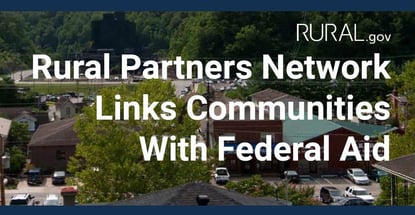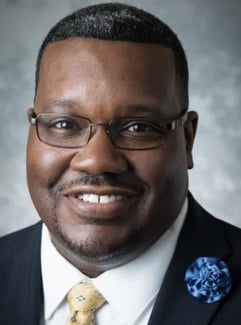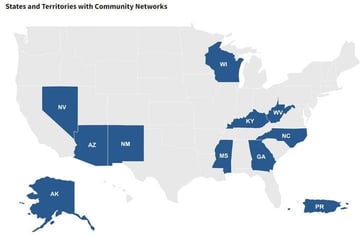
Our experts and industry insiders blog the latest news, studies and current events from inside the credit card industry. Our articles follow strict editorial guidelines.
In a Nutshell: Agencies managing federal funding programs can overlook rural communities. The Rural Partners Network is an alliance that connects rural communities with programs to help them overcome barriers and prosper. The alliance operates in numerous states across the country and Puerto Rico. The Rural Partners Network leverages partnerships to maximize its impact on rural communities.
Individuals living in metropolitan areas enjoy more amenities than their country-dwelling counterparts, including increased access to the arts, public transportation, professional sporting events, and more reliable Wi-Fi.
While those living in rural settings may appreciate having more wide-open spaces to roam and fewer neighbors to contend with than urbanites, they also can suffer from a lack of resources.
In 2022, the Biden administration launched the Rural Partners Network (RPN) to recognize that rural communities deserve opportunities to advance and realize prosperity on their terms in the places they call home, just as people who live in urban areas do. We spoke with Lee Jones, RPN’s Executive Director, to learn how the alliance helps rural communities access vital resources.

Jones said rural communities face unique challenges when they seek federal resources for economic development and housing. For example, he said some small towns have part-time mayors who also have other jobs.
Jones said RPN is a collaboration among 25 federal agencies co-led by the U.S. Department of Agriculture (USDA) and the White House. In April 2022, the alliance launched 14 networks in Arizona, Georgia, Kentucky, Mississippi, and New Mexico. In November 2022, it launched an additional 22 networks in Alaska, Nevada, North Carolina, West Virginia, Wisconsin, and Puerto Rico.
Jones said one of the hallmarks of RPN, in addition to collaborating with federal partners, is its ability to pay a full-time staff in the communities it serves.
“The Rural Partners Network is a representation of good government,” Jones said. “It’s just the right thing to do to make sure that we’re able to be responsive to the needs of the rural communities that absolutely need us the most. We’re making a difference. It does take time, but we’ve been chipping away at our work, and we’re feeling good about where we are.”
Feedback Points Toward the Alliance’s Success
Jones said most Americans lived in rural communities 100 years ago. He said, according to recent census data, roughly 30% of the U.S. population currently resides in rural areas.
Rural settings provide open spaces that farmers can use for agricultural endeavors. Jones said rural America is responsible for feeding the nation, and the health of rural communities is an indicator of whether a country is thriving. He said communities that start accessing federal funding gain more than financial assistance — they gain confidence to apply for more federal aid.

“If we can do the job of giving these rural communities the comfort to know that they can compete for federal programs, that’s half the battle,” Jones said. “And we provide the technical assistance that can help communities win federal awards.”
Jones said RPN is excited to continue strategizing and working with its federal partners to create equitable access to some of the federal programs they offer. He said the organization recently worked with the Department of Labor to ensure that the Workforce Opportunity for Rural Communities initiative includes a specific focus to address the needs of communities within RPN’s footprint.
The Rural Partners Network employs metrics to measure its success. Jones said he knows the alliance is doing its job when he hears of other states not yet partnering with RPN that want to join its programs. He said he also assesses RPN’s performance by what community members say about their experiences working with the organization.
“We recently had a forum in Las Cruces, New Mexico for federal partners,” Jones said. “Multiple stories were told that day of grants or technical assistance awards that happened because of the intervention of our staff there. Our team has been able to be very impactful there. They navigate the wide array of federal solutions available to help identify the right one, make the proper connection to the federal agency, and help secure assistance for the community.”
Diana O’Brien, Director of Impact and Outreach for the Community Foundation of Southern New Mexico, also attended the forum.
“The Community Foundation of Southern New Mexico is honored to have participated in the Rural Networks Partner Forum,” O’Brien said. “This forum provided the opportunity for all attendees to share, discuss, and learn from one another so that we can continue to grow and strengthen our partnerships.”
Collaborating to Uncover Urgent Community Needs
The U.S. government manages numerous programs aimed at improving Americans’ quality of life. Jones said the federal government is proficient at creating programs, but it hasn’t always ensured people have equitable access to them.
The Rural Partners Network works with communities to target their most urgent needs. Jones said communities in need aren’t necessarily concerned with which federal program provides them with financial assistance as long as they can access the programs that benefit them. He said RPN engages in strategic planning with communities to enable them to address the challenges they want to face on their terms.

Individuals can learn more about RPN’s community networks on its website. Jones said the alliance’s structure allows it to impact communities where it doesn’t have a direct presence.
“Even though we’re not in states such as Arkansas or Texas, we have efforts going on that address the challenges people in those states are seeking to address,” Jones said. “If there’s a community out there that would like some additional assistance or wants to have a conversation with a particular federal agency, but they just don’t know how, give us an opportunity to address that challenge.”
Jones said he advises individuals and communities looking for RPN’s support to email the alliance. He said RPN employs a dedicated team to monitor incoming emails and issue responses promptly.
Partnerships Help the Rural Partners Network Grow
The Rural Partners Network’s efforts have attracted the attention of other states. Jones said RPN has interacted with representatives of states, including California and Pennsylvania, who are interested in RPN’s community-oriented initiatives. He said that although RPN may not be in a position to expand efficiently into additional states, organizations can mirror the alliance’s approach to solving community problems.
Jones said RPN is attempting to establish a replicable model and identify best practices to help communities outside of the alliance’s footprint access assistance and leverage the resources RPN has at its disposal.
“The Texas Rural Funders uses a similar model by which they’re providing support to a number of small and impoverished communities of color in East Texas,” Jones said. “And we’re doing that collaboratively with them.”
Applying for federal funding can be laborious and time-consuming. Jones said he’s appreciative of agencies that simplify the application process. He said some agencies have made applying for assistance easier by accepting letters of interest from communities seeking federal funding rather than requiring them to complete lengthy applications as a first step.
As the alliance nears its second anniversary, Jones said he’s thankful for the support RPN receives from the USDA and the White House. He said he is excited about continuing announcements detailing additional funding awards and the efforts of RPN’s partners, including the Environmental Protection Agency’s involvement in programs focusing on clean and renewable energy.
Jones said he is proud of RPN’s work and ability to partner with other organizations to make a difference in rural communities.
“It’s wonderful that we’re able to talk with our partners and leverage each other’s resources,” Jones said. “We enjoy an excellent, collaborative relationship with the organizations we work with that I think will pay huge dividends for all sorts of communities across the country in the long run.”


![18 Credit Card Pre-Approval Links ([updated_month_year]) 18 Credit Card Pre-Approval Links ([updated_month_year])](https://www.cardrates.com/images/uploads/2019/09/Credit-Card-PreApproval-Links-Feat.jpg?width=158&height=120&fit=crop)

![9 Best Airline Rewards Programs: Expert Guide ([updated_month_year]) 9 Best Airline Rewards Programs: Expert Guide ([updated_month_year])](https://www.cardrates.com/images/uploads/2017/10/airline.png?width=158&height=120&fit=crop)
![12 Best Credit Cards for Building Credit ([updated_month_year]) 12 Best Credit Cards for Building Credit ([updated_month_year])](https://www.cardrates.com/images/uploads/2017/08/BUILD.jpg?width=158&height=120&fit=crop)
![7 Best Credit Cards For Building Credit ([updated_month_year]) 7 Best Credit Cards For Building Credit ([updated_month_year])](https://www.cardrates.com/images/uploads/2021/02/Best-Credit-Cards-For-Building-Credit.jpg?width=158&height=120&fit=crop)
![How to Start Building Your Credit at 18 ([updated_month_year]) How to Start Building Your Credit at 18 ([updated_month_year])](https://www.cardrates.com/images/uploads/2022/04/How-to-Start-Building-Credit-at-18.jpg?width=158&height=120&fit=crop)

